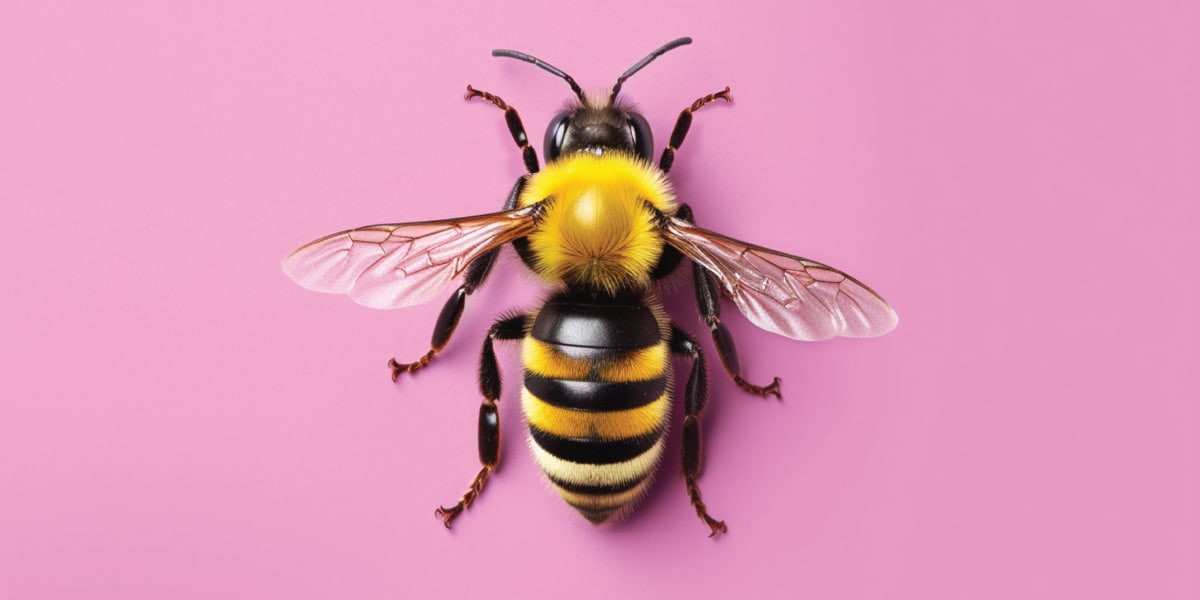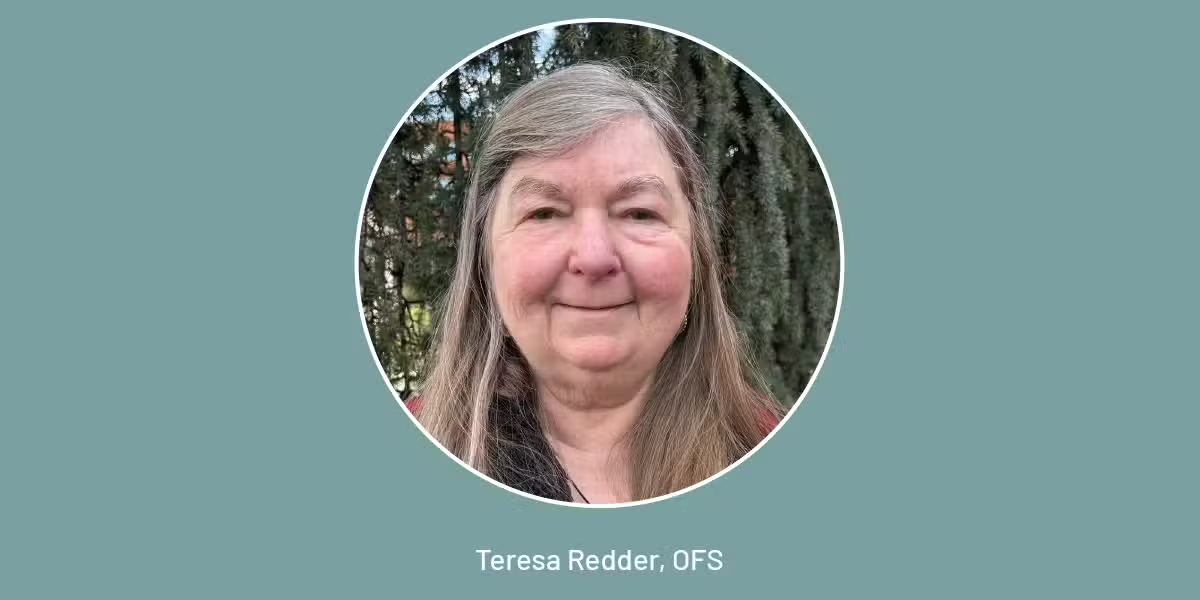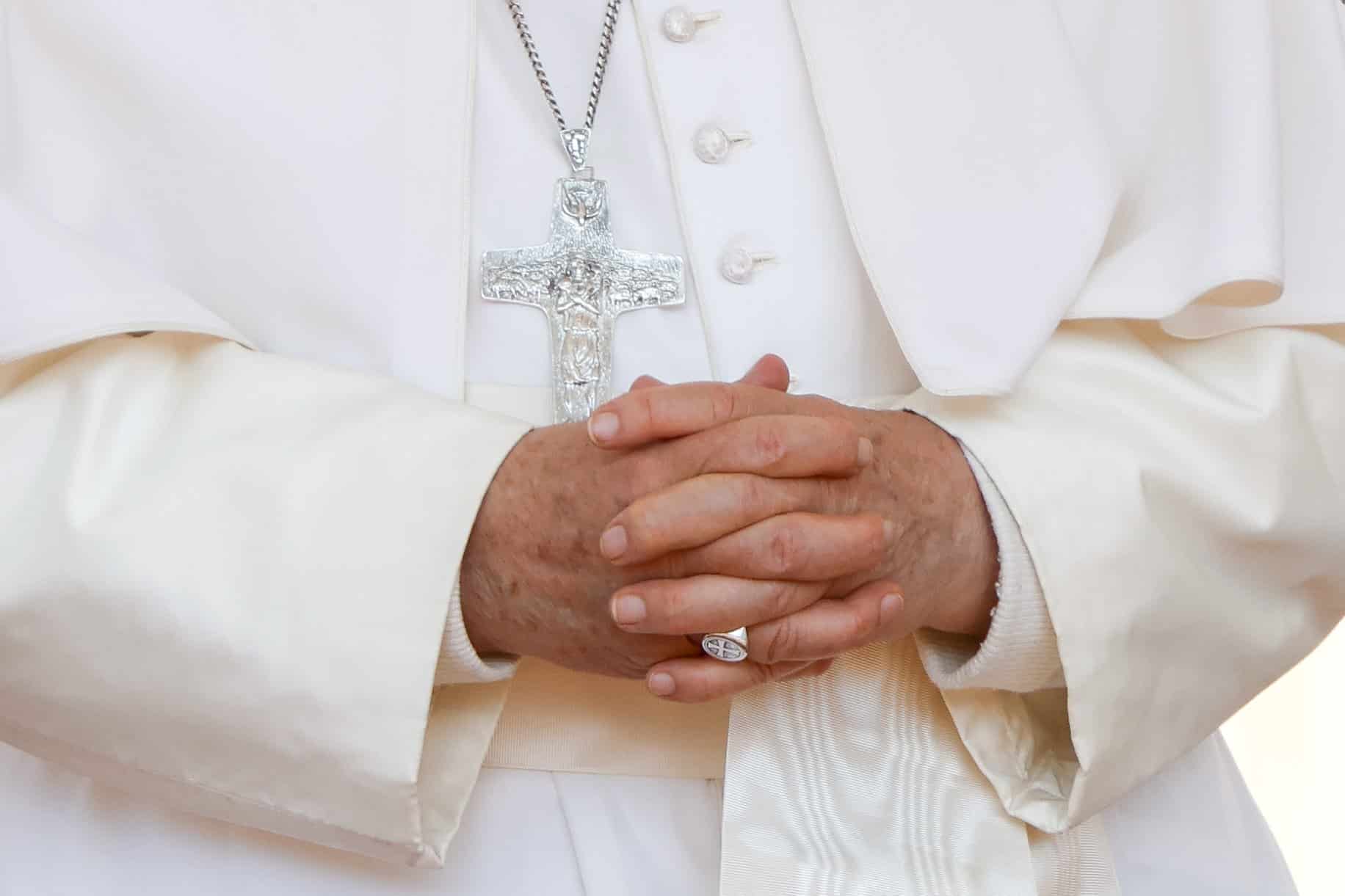When we allow ourselves to be as open as a child in our relationship with creation, we are one step closer to bringing about the kingdom of God.
Sometimes, the things you learn in books, in the classroom, or in church become suddenly relevant and clear at random moments in your life. One such moment came for me when I found myself singing “Amazing Grace” at a somber backyard funeral for a honeybee. My oldest daughter, Sophia, not quite 4 years old, stood in front of me, with tears making streaks in the dirt on her cheeks. She sang the words to the familiar hymn along with me, pausing at times to sob a little more as I hugged her tight. In front of us was a small circle made of little pebbles and stones with a single flower, plucked from my garden, placed in the middle.
About 30 minutes prior, my girls had been playing in their mud kitchen when they decided to go jump on the trampoline. As Sophia climbed up the little plastic steps, she noticed something in the netting wiggling around. It was a small honeybee, buzzing weakly as it tried to shimmy its little body through one of the holes in the net.
“It’s stuck!!” Sophia cried. “We have to save it!”
Rescuing a Honeybee
“Sweetie,” I said in my most sympathetic voice, “I don’t know if we can save it. It looks very stuck, and I’m afraid we would squish it if we tried to get it out.”
“No!” Sophia said. “I’ve done it before. I push something against them, and they fall out and they fly away. Let me go get a rock.” With that, she jumped down and scoured the yard for the smoothest rock she could find.
I watched as my daughter carefully pressed the smooth side of the rock against the bee, which by now had stopped buzzing and wiggling. It didn’t take long for the little bee to fall out of the netting where it had been stuck and fall onto the blue mat surrounding the trampoline. I cringed as I saw it lying there, motionless. Our honeybee didn’t make it.
“I’m sorry, Soph,” I said, as she hurriedly crawled around the outside of the net to check on the bee.
“Did it die?” she asked, looking up at me. As the sunlight reflected off the tears shimmering in her bright blue eyes, I knew she already knew. “Yes, baby. It died. You tried so hard to save it and you did a wonderful thing. It’s not your fault. The little bee was lucky to have a girl like you who cared so much about it.”
Sophia burst into tears. As she wept over the bee, she asked me if we could bury it, and that’s how I ended up spending my afternoon singing hymns beside the grave of a poor bee that accidentally flew into our trampoline net.
Spirituality and the Environment
As the afternoon darkened into evening, the whole incident remained on my mind. I had recently begun my second year as an online graduate student with the Franciscan School of Theology, and most of my evenings were spent delving into the spiritual profundity of Sts. Francis, Clare, and Bonaventure, Blessed Duns Scotus, and other theologians within and outside of the Franciscan tradition. We had learned about St. Francis’ care for the earth and his belief that each element of the universe, each creature, and each human being are all family. Throughout my time exploring all of this, I have asked myself, How important is spirituality in modern environmentalism?
Is there room for spirituality in the 21st century—one characterized by the imminent threat of environmental disaster and fueled by capitalism and consumerism? With the rampant environmental destruction that threatens all human and nonhuman life on earth, one may plausibly ask such a question. It may seem difficult, if not irresponsible or misguided, to place any emphasis on spirituality during a time when the physical world cries out for our attention and care. Undoubtedly, the surface-level problems that contribute to the destruction of the earth are physical: deforestation, excessive oil drilling, pollution, greenhouse gas emissions, the overuse of nonrenewable resources, and widespread consumerism, to name a few. Similarly, plastic usage has caused problems in landfills, animal habitats, humans, and wildlife.
Scientists, environmental advocates, Indigenous communities, and activists have fought for systemic change and, in many cases, there are viable and specific solutions that exist and have been proposed. Yet, such changes are, in most cases, slow to occur. Despite the ever-increasing evidence that the natural world is deteriorating at levels that will alter life on earth if human action remains unchecked and unchanged, such harmful practices are still rampant. It is because of this that we must be moved to consider the fundamental causes of such damaging human behavior and seek solutions that address these issues. What is an effective way to change human behavior if knowledge of the harm caused by these behaviors is widely known and understood and, when practical, science-backed solutions are equally apparent?
Love the World to Bring Change
In the introduction to his book How to Raise a Wild Child: The Art and Science of Falling in Love with Nature, paleontologist and environmentalist Scott D. Sampson states, “Greener technologies, simpler lifestyles, and restructured economies are essential, but insufficient. Exterior transformations must be accompanied by an interior revolution in thinking.” Likewise, in her book Saving Us: A Climate Scientist’s Case for Hope and Healing in a Divided World, climate scientist Katharine Hayhoe asserts that “personal and lived experiences [are] far more compelling than reeling off distant facts,” and experiences connecting one to nature are a far greater indicator of the likelihood that one will want to care for the environment than the actual knowledge of scientific facts surrounding the climate crisis and sustainable solutions.
Simply put, we must foster a genuine and affectionate connection to our world before we can effect change within it. Before we can progress to the practical solutions in a way that will be sustainable and transformative, humanity needs an inner conversion—one that recognizes the innate value of the earth and our fundamental connection to all that exists within it and even outside of it.
This returns us to my first question: Is spirituality relevant in the face of a climate crisis? My answer is yes—that is, if our spirituality leads us into deeper love and communion with the natural world. This is not to say that spirituality is more important than science-backed, practical solutions. On the contrary, my hope is that spiritual transformation would prompt further practice and acceptance of such solutions.
It is also important to keep in mind that one approach to spirituality will not apply to everyone universally, nor is there only one spiritual perspective that may prompt a deepening connection to and care for the environment. Even within a single faith tradition, spiritual practices will be as varied and unique as there are people. Franciscan spirituality can act as a guide through one spiritual path among many that may be applicable and transformative for particular people within the context of various spiritual and religious traditions.
During his life, St. Francis of Assisi loved the bees. He was known to set out various forms of sustenance for them in the winter so that they didn’t starve. His love for the world was holistic: He believed that everything within creation owed its existence to the outpouring of God’s self-diffusive love. He recognized this in the smallest of insects, in the trees, in the moon and sun, and in the people he met. Each thing and each being existed simply because God desired it so. St. Francis lived in this reality by treating all that he encountered with respect, love, and care.
It is through God’s love for us that we may begin to love God’s creation, and it is through God’s creation that we may then learn to love God. In The Universal Christ: How a Forgotten Reality Can Change Everything We See, Hope For, and Believe, Father Richard Rohr states: “St. Bonaventure taught that to work up to loving God, start by loving the very humblest and simplest things. . . . Don’t start by trying to love God, or even people; love rocks and elements first, move to trees, then animals, and then humans. Angels will then seem like a real possibility, and God is then just a short leap away. It works. In fact, it might be the only way to love, because how you do anything is how you do everything.”
In this way, one’s spirituality—the means through which one engages with and loves God—involves stepping stones that naturally lead to love for creation as well. When we become more aware of the reality that nothing in creation exists outside of the love of God, we may then be led further into love for the world around us. The spirituality of St. Francis was one that looked at the world from the ground up. He recognized the unique value each creature, each person, and even each created thing held, and it was through this that he lived his life in radical love for the sake of others and creation.
A Radical Conversion
Unless we learn to weep for the suffering of a bee, we will not understand what it is to weep for the suffering of the earth. What St. Francis’ life can show us is that our actions on behalf of creation may be strengthened when we first experience a radical conversion of the heart—one that, like St. Francis, recognizes the innate value of the small things, the unloved things, and the forgotten things. In this way, his story can invite us to adopt an environmentalism that is motivated by our spiritual convictions and by the love that those convictions must naturally bring to the surface—an environmentalism of the heart.
Our spirituality can be a means by which we are led more deeply into the reality of the love of God manifest in all things, and, through this revelation, we may be led to deeper love ourselves. When we believe the wind to be our brother and water to be our sister, when we call a tree by name or lovingly gaze at an insect, when we truly recognize that the earth and all her creatures are family, we can venture to love them, not just for their usefulness, their beauty, or their purpose in our own lives, but for themselves.
Jesus said that nobody can enter the kingdom of God unless they become like a little child (Mt 18:3). My daughter didn’t study theology or memorize St. Francis’ “Canticle of the Creatures.” It was the inherent value of the bee—its worthiness of being saved, wept over, and buried—that was innate within her. Might our children be the ones to show us the kingdom of God all around us? For what awaits is to behold the world with that childlike wonder and awe and to recognize that every atom of our universe is a miracle spoken into existence by the loving word of God. To see the kingdom of God in our midst, we need to become like children: This will mean weeping, like a child does for the honeybee; it also means pursuing the rescue of the honeybee, even as an older voice might tell us it’s too hard or impossible.
May we allow our spirituality to be the hand that guides us back to these fundamental truths that we have long since forgotten—truths that were etched into our hearts as children as we innocently marveled at the glory of God around us. Perhaps then, our spirituality may manifest in our lives as action, advocacy, and care for this beautiful planet we call home.









2 thoughts on “Loving Creation, Loving God ”
”weeping, like a child does for the honeybee”
beautiful article on God’s creation, lesson to learn from the little girl who cared so much to save the tiny bee.
Wonderful reflection Carie! Loving the world from the ground up sums up the simple, humble model of St. Francis so well.